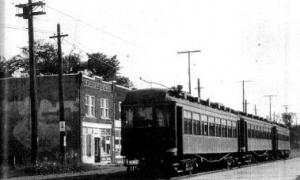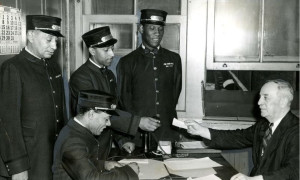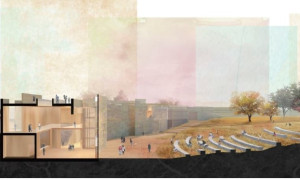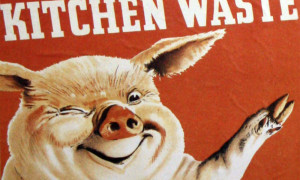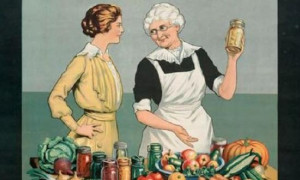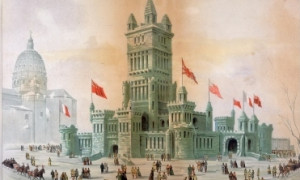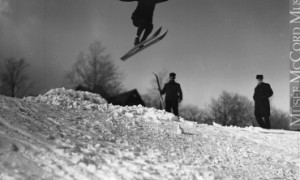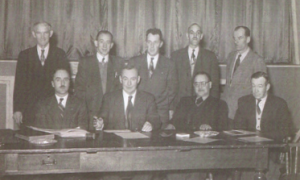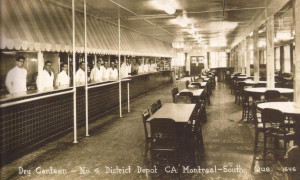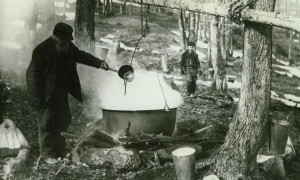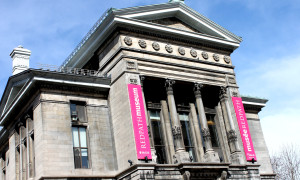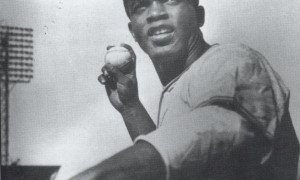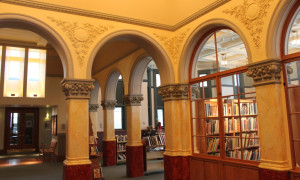Articles
--February 20, 2019.
Transit service to the South Shore
--February 4, 2019.
1.
c. Canadian Northern Railway (CNoR). This company built the Mount Royal tunnel in 1912 and would merge with the Canadian National Railway (CN) in 1923 in large part due to this cost of this project.
2.
d. All of the above
3.
d. All of the above
4.
a. The Quiet Revolution. At this stage in Quebec’s history, some Francophones began to move into wealthier urban communities such as Mount Royal that had traditionally been anglophone dominated.
--February 4, 2019.
1. By which Canadian railway company was chief engineer Henry Wicksteed, the man who planned and organised the construction of the Mount Royal tunnel, employed?
a. Canadian Pacific Railway
b. Canadian National Railway
c. Canadian Northern Railway
d. Grand Trunk Railway
--November 20, 2017.
Quebec might not have had a system of whites-only signage, as in the southern United States during the Jim Crow era, or any immediate plans to build a wall to keep out our neighbours, but we do have a history of slavery and racism.
--March 20, 2017.
Most people driving into Montreal have no idea that the road exiting off the Victoria Bridge runs over the burial place for 6,000 Irish immigrants. Even most Montrealers are unaware of the significance of the large black stone sitting in the median at that same exit.
--December 8, 2015.
The Victoria Exchange Building, Pointe-Saint-Charles District, Montreal.
History and description of 2551 Rue de Châteauguay, Montréal
(The building number in 1929-30 was 211; in Lovell's Montréal Directory from 1930-31 on it was 2551.)
Pointe-Saint-Charles
October 19, 2015.
The following is the first instalment in a series written by Sandra Stock, as part of QAHN's project, Housewife Heroines: Anglophone Women at Home in Montreal during World War II, which has been funded through the World War Commemorations Community Fund.
October 13, 2015.
The following is the first installment in a series written by Sandra Stock, as part of QAHN's project, Housewife Heroines: Anglophone Women at Home in Montreal during World War II, which has been funded through the Department of Canadian Heritage's World War Commemorations Community Fund.
--October 8, 2015.
The following is the first installment in a series written by Sandra Stock, as part of QAHN's project, Housewife Heroines: Anglophone Women at Home in Montreal during World War II, which has been funded through the Department of Canadian Heritage's World War Commemorations Community Fund.
Since the time of earliest settlement, the greatest unsolved challenge facing Montrealers has been what to do about winter. Winter has determined our culture and history probably more than any other natural or human factor. It's tough. It's not for sissies. Thus its necessary survival requirements have created many unique material and social inventions.
Mount Royal: as mountains go, it's not very big – only 233 meters (764 feet) in height on the main summit, and a diminutive 211 meters ( 692 feet) on the Outremont peak and an even less 201 meters (659 feet) for the Westmount peak lookout.
While much has been made in the media about Montreal having its first English mayor in a hundred years . Mayor Michael Applebaum is not the only English-speaking person to serve as mayor of a majority Francophone city in Quebec over the last century. In South Shore St.
As I entered the Fort Chambly, old ghosts of people seemed to appear. I see some putting cannonballs in cannons and then light the wick. The sound is awfully loud! A tour guide then tells me about the history of the Fort Chambly…
Fort Chambly was fist built in 1665. There were 4 forts. The first one was in wood. It was unfortunately too old so, they needed to replace it. They replaced it by another one in wood. It then accidentally burnt. Because the wood fort couldn’t protect itself from cannonballs and other explosives, they replaced the wood fort by a stone fort.
The City of Montreal is flanked on both sides by the towns of Montreal East and Montreal West, each with their own different character. Even after the municipal mergers of 2002 , the former city of Montreal North remains a separate borough on the island map.
Did you know that maple syrup is the oldest agricultural product in Quebec? It all began with the Indigenous peoples who called it “Sweet Water.” When spring returned and the maple sap was running the Indigenous peoples offered the boiled thickened syrup as a sacrifice to the Great Spirit. “Sugaring off” was largely a woman’s function in Iroquois communities. The men cut notches into tree trunks and small wooden troughs were stuck into the bark.
The Redpath Museum, one of the oldest museums in Canada, was opened in 1882 to preserve and display the valuable collections of Sir William Dawson, a noted Canadian natural scientist.
“It is ironical that America, supposedly the cradle of democracy, is forced to send the first two Negroes in baseball to Canada in order for them to be accepted.”
-Chicago Defender editorial, April 13, 1946.
In response to a plan to connect Montreal’s airport to the downtown by diverting the existing CPR tracks around the Bell Centre and old Windsor Station to a new elevated terminus with multi-story commercial and office space, Michael Fish has publicly expressed his opinion that it would be cheaper to demolish the Bell Centre and reopen the old Windsor Station as a commuter
Without a doubt, one of the jewels of Westmount, and probably of Greater Montreal, is the Westmount Public Library.
Established in 1897 in honour of Queen Victoria's diamond jubilee, the library, according to its bylaws, was to be "forever free to the use of the inhabitants and ratepayers of the town."
